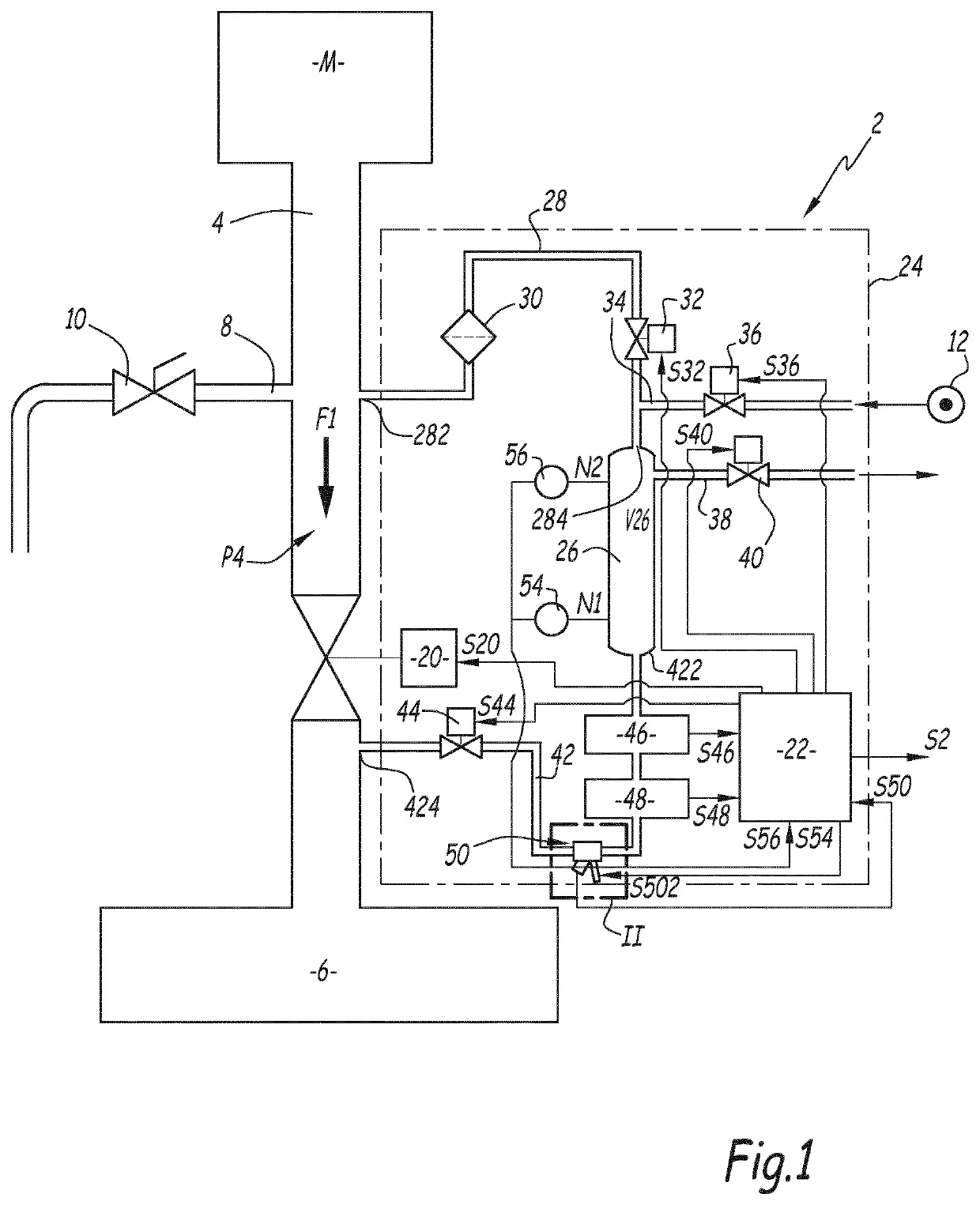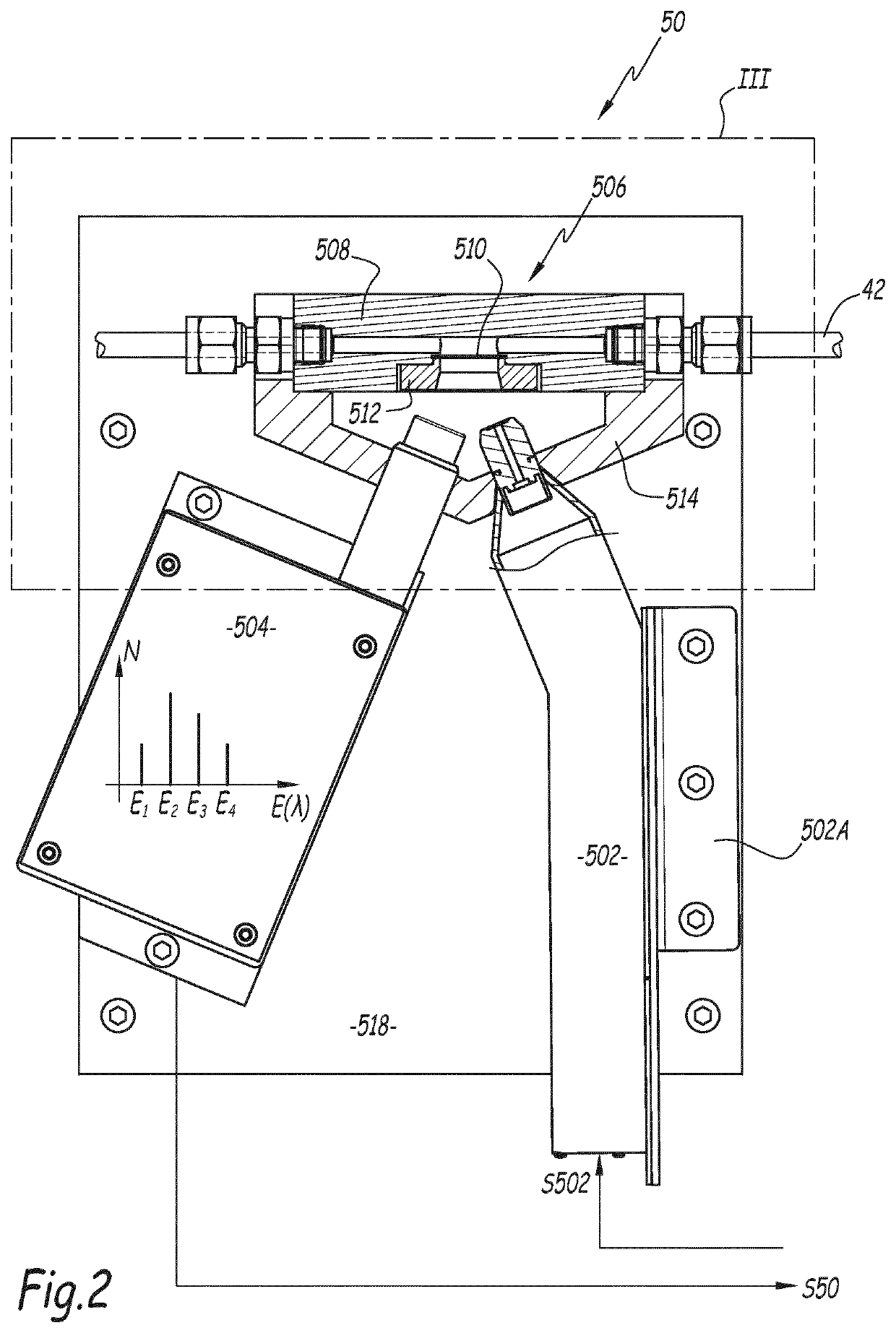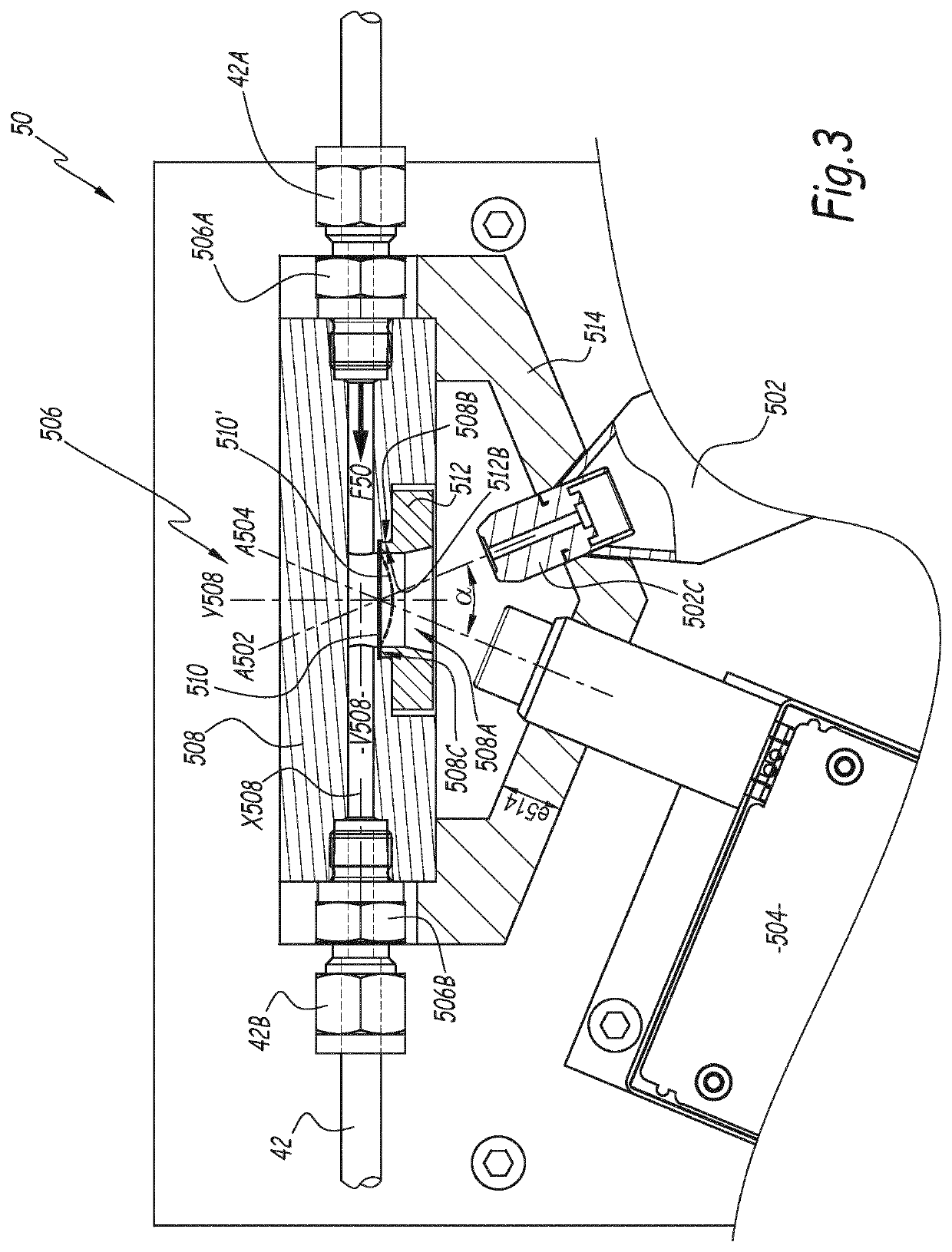Process for calibrating a sensor, automated method for online monitoring of the changes to a liquid body and associated sensor
a technology of liquid body and sensor, applied in the field of measuring instruments, can solve the problems of high cost of maintenance operations, relatively difficult operation of wind turbines, and sensitive to wear or corrosion phenomena, and achieve the effect of reliable measurement and satisfactory mechanical properties
- Summary
- Abstract
- Description
- Claims
- Application Information
AI Technical Summary
Benefits of technology
Problems solved by technology
Method used
Image
Examples
second embodiment
[0128]FIGS. 8 to 11 schematically illustrate the successive steps of an automated process carried out using the installation 2 of FIG. 1. This process is automated inasmuch as it can be implemented, partially or preferably totally, without human intervention, under the control of the unit 22. The same is true for the process explained below regarding the invention.
[0129]By default, and outside withdrawal phases, the oil leaving the equipment M flows in the pipe 4, in the direction of arrow F1 in FIG. 1, from the equipment M toward the oil pan 6, without being retained by the valve 20, which is in the open or on configuration, while the other valves are closed.
[0130]When it is appropriate to determine the iron content of the oil leaving the equipment M, the unit 22 orders the valve 20 to close, such that a retention is created in the pipe 4 where a quantity of oil, i.e., lubricant, accumulates, as shown by the gray part L in FIG. 2.
[0131]In the configuration of FIG. 8, the pipe 4 ser...
first embodiment
[0142]According to another alternative of the invention that is not shown, several pipes comparable to the pipe 4 are used, each of them being provided to collect oil from part of the equipment M. In this case, each of said pipes is equipped with a valve comparable to the valve 20, which allows them to supply, in parallel, a shared buffer tank comparable to the tank 26. Like in the first embodiment, a sensor, identical to the sensor 50, is arranged in a pipe for discharging lubricant from this buffer tank.
[0143]The invention is described above in the case where the sensor 50 is used to determine the iron content of a lubricant. It is, however, applicable for determining the content of a lubricant in another predetermined chemical element, for example calcium, sulfur, vanadium, chromium, molybdenum, copper, silver, tin, aluminum, nickel, zinc, lead or phosphorus. In all cases, the component material of the casing is suitable for the chemical element in question, as well as the energy...
PUM
| Property | Measurement | Unit |
|---|---|---|
| energy | aaaaa | aaaaa |
| energy | aaaaa | aaaaa |
| thickness | aaaaa | aaaaa |
Abstract
Description
Claims
Application Information
 Login to View More
Login to View More - R&D
- Intellectual Property
- Life Sciences
- Materials
- Tech Scout
- Unparalleled Data Quality
- Higher Quality Content
- 60% Fewer Hallucinations
Browse by: Latest US Patents, China's latest patents, Technical Efficacy Thesaurus, Application Domain, Technology Topic, Popular Technical Reports.
© 2025 PatSnap. All rights reserved.Legal|Privacy policy|Modern Slavery Act Transparency Statement|Sitemap|About US| Contact US: help@patsnap.com



